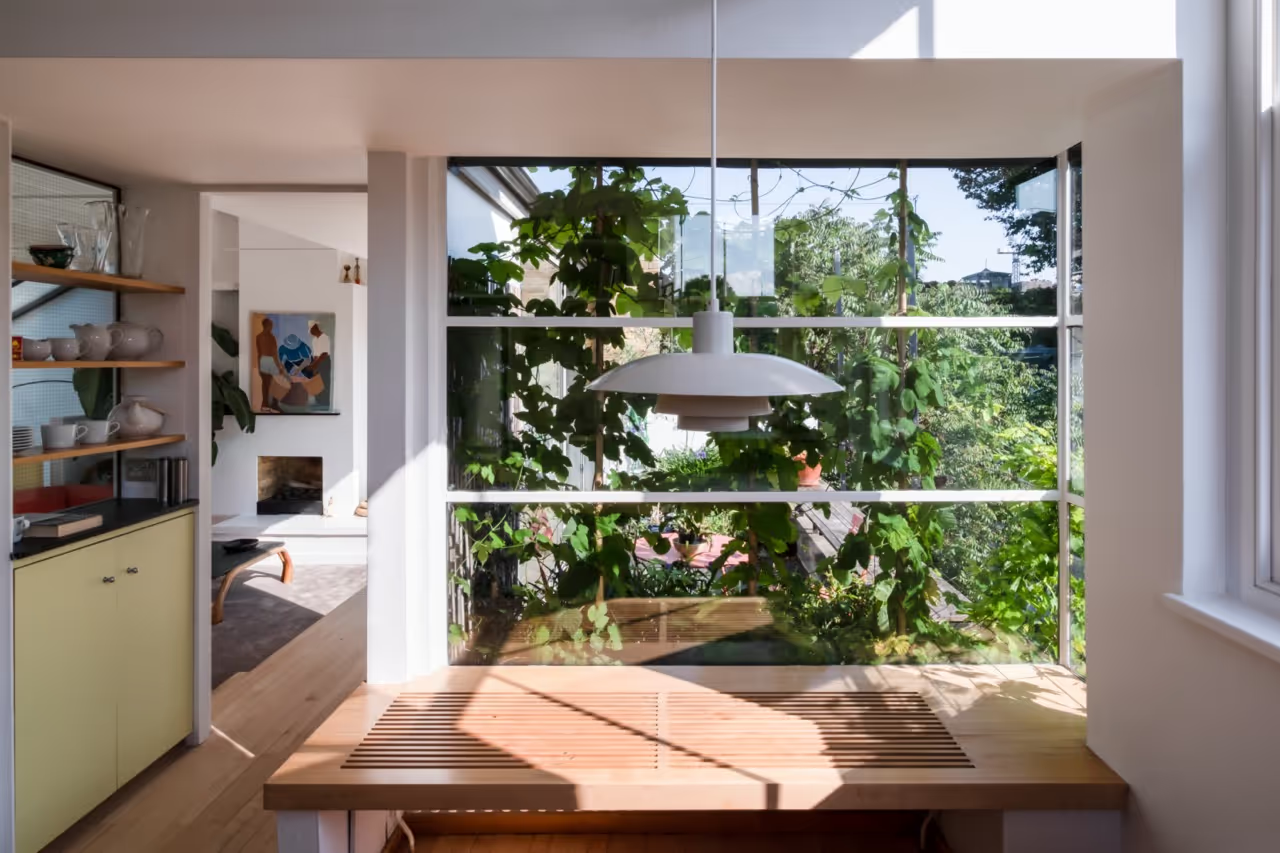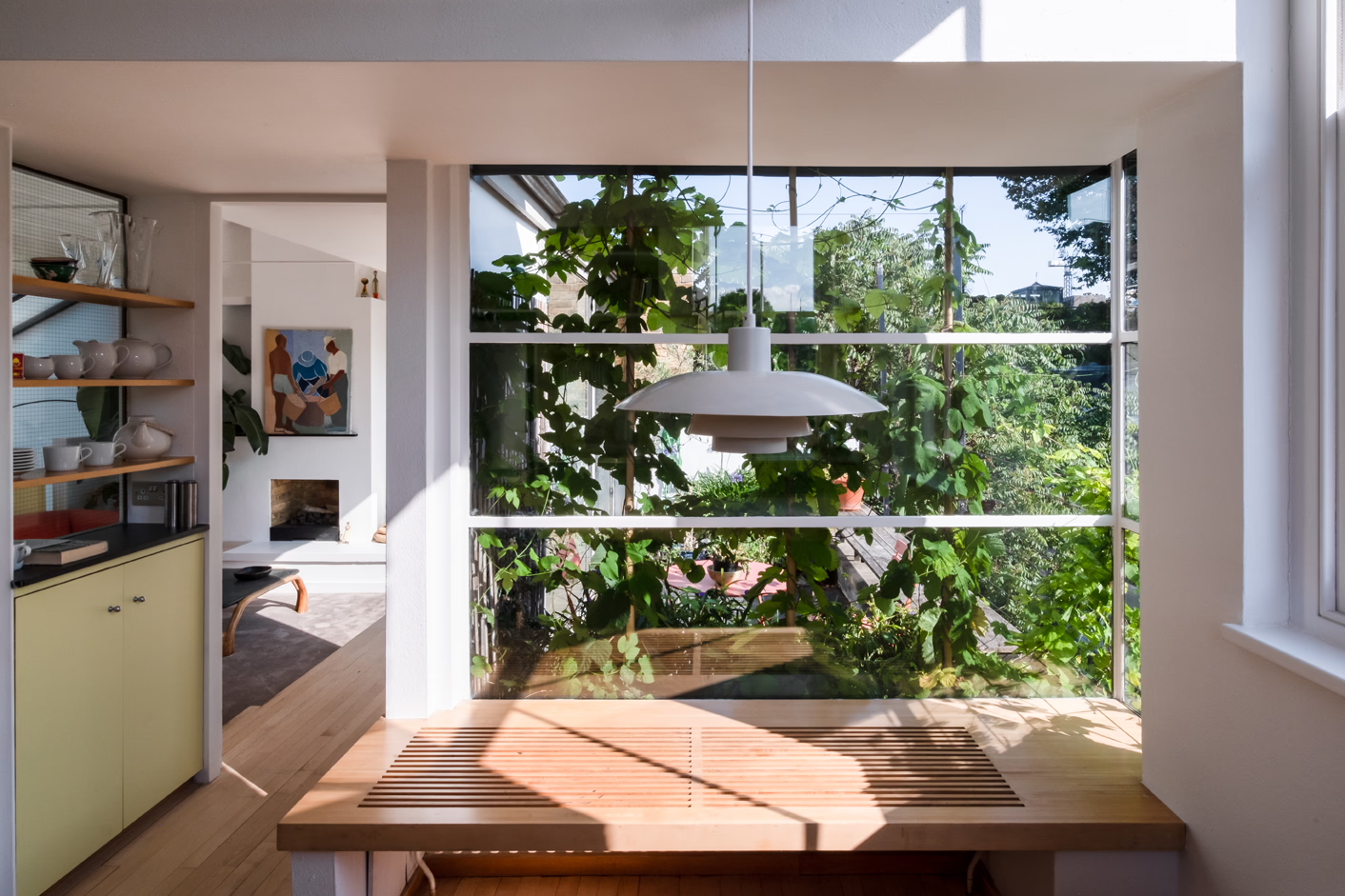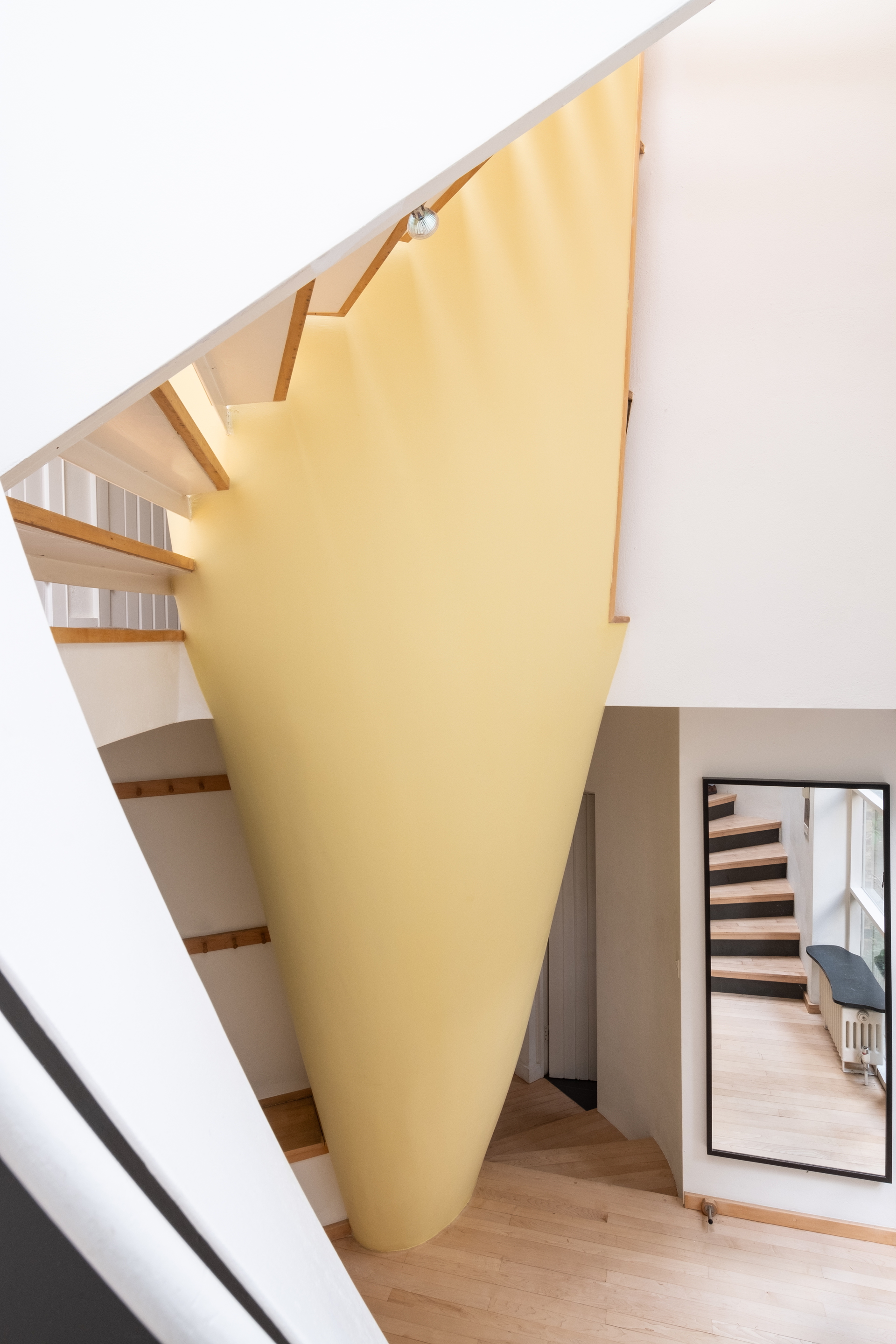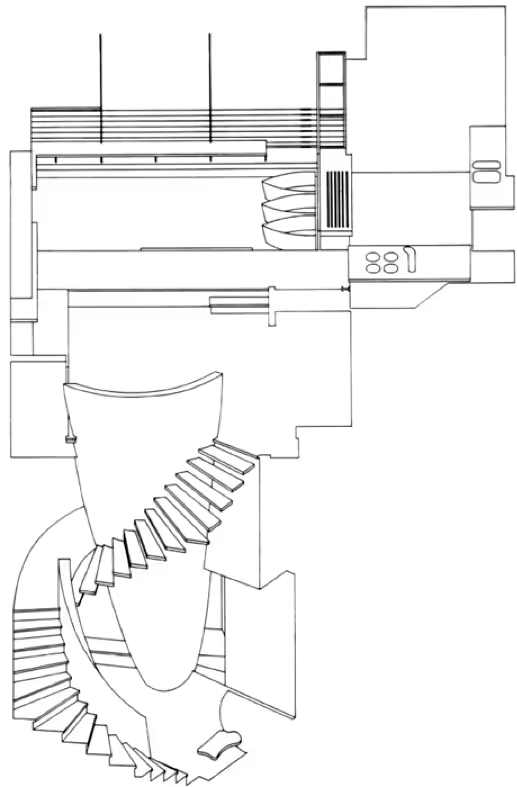
Doughty Mews
This end of terrace house in Bloomsbury occupies a small triangular plot at the end of a terrace of mews houses. The front elevation appears at first sight to play with the normal mews elements of sash windows and garage doors. But there is more going on besides, better seen from the side or the rear where the house assumes a more contemporary idiom.
The ground plan of the house follows the triangular shape of the site, which was dictated by the course of a now-buried underground river, a tributary of the River Fleet. The upper storeys cantilever out, swinging the house's orientation towards the open school grounds and trees to the south. Inside, this gives more space and better shaped rooms.
The uppermost storey is set back from the street, emphasising the corner tower which book-ends the mews. In this way, the house, along with its signature fig tree, earns its place as a significant street corner, forming a townscape hinge at the entrance to the mews.
In a house this small, spaces must be close-packed like pebbles in a jar. The kitchen and living room are on the top floor where there are longer views. They open onto a rooftop terrace overlooking the mews. The kitchen is tiny, with worktops and seating pushed out into glazed cantilevered bays to gain crucial inches. Its tower form means that it is lit from all four sides. On the bedroom floor curved walls make best use of limited space. By contrast, the stair connecting the three floors is sculptural and spatially generous.
1998 RIBA Award
2000 Civic Trust Award
Architect: Ash Sakula
Completed: 1996







